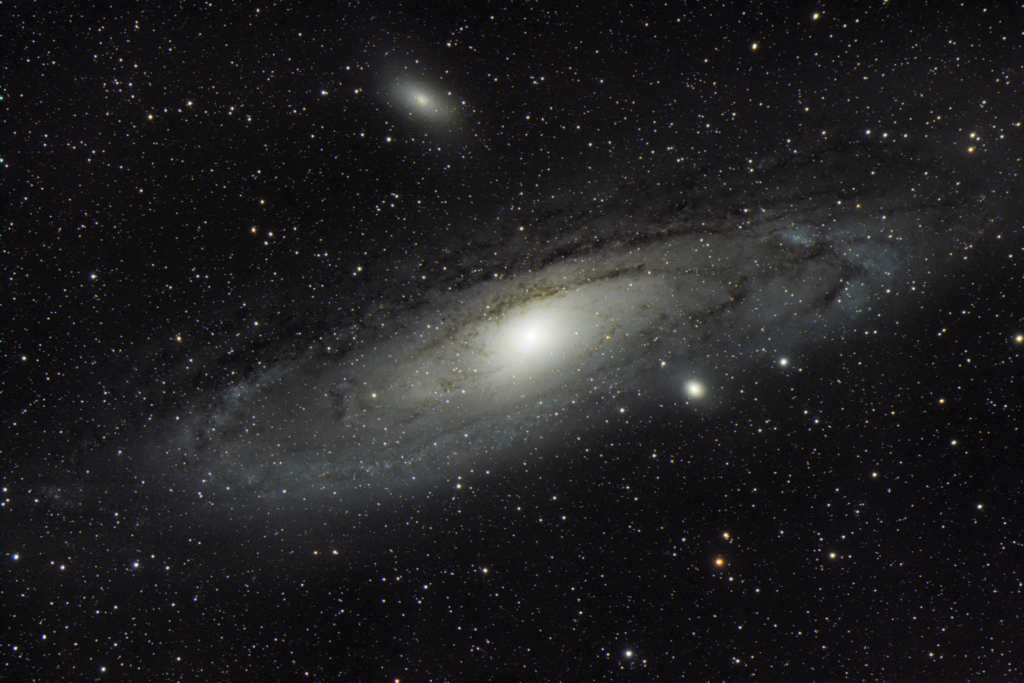The Andromeda Galaxy (M31) is a spiral galaxy and is the closest neighbor to our Milky Way galaxy at a distance of about 2-1/2 million light years. It’s 220,000 light years across and contains about 1 trillion stars. It’s actually moving towards the Milky Way at about 70 miles per second and will collide and merge with our galaxy in about 4 billion years, forming a new, combined galaxy. Interestingly, despite the immense number of stars in M31 and our galaxy, with so much space between the stars they should pass right through each other without any direct collisions.
Also in the image are two small, elliptical galaxies, M32 appearing on the edge of the disk and M110, the one showing above Andromeda, although both are actually a little further away than M31.
I’ve been wanting to image the Andromeda Galaxy since I started getting into astronomy at the beginning of this year. I finally got a chance last week to image for three nights in a row and by 11:00 pm it was high enough in the sky to get some decent exposures. I imaged until 3:00 am or later each of the nights, although with the imaging mostly automated I was able to get some sleep in while it captured all the photos. I ended up throwing out the first night’s images due to some technical issues, but got 60 – 180 second long exposures each of the next two nights.
I stacked the best 100 exposures for a total integration time of 5 hours. In addition to getting my auto-guiding and dithering working optimally, by pre-converting my images to .tiff files before stacking resulted in a much, much improved image, with much less noise and much better color. I’m also starting to learn more of the capabilities of StarTools, which is the image processing software I use. Now I’m tempted to rework my prior images.
